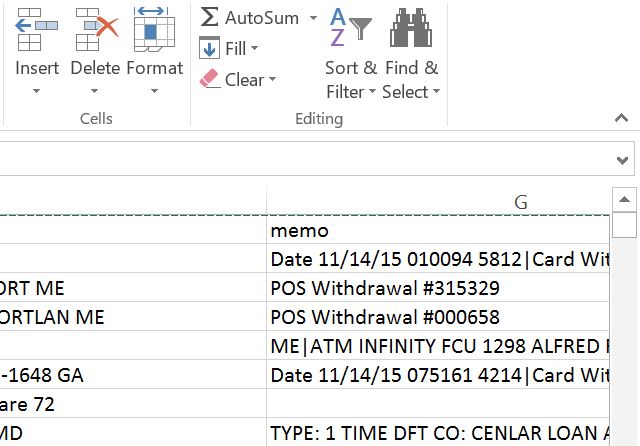

Technology that makes our lives simpler typically comes with a trade-off. With Radio Frequency Identification (RFID), that trade-off is often associated with personal tracking and the loss of privacy.
As of now, that’s mostly nonsense. I certainly can’t predict the future, but I can tell you that RFID — when used correctly — has minimal security concerns and many practical benefits. From improved inventory tracking to bracelets that hold medical information, there are a multitude of reasons to support RFID chips.
Unfortunately, there are also a ton of myths. Let’s dispel a few of them.
In journalism, we’re taught to follow the money. The money, in this case, clearly favors QR and barcodes.
Many argue that RFID chips are the obvious choice to replace aging barcodes and QR codes that never really caught on — and in a perfect world, they would. Barcodes only hold 10 to 12 characters of information while a single RFID chip can hold 2 KB of data. Not only that, they can be written and re-written as many times as necessary.
But the problem is that it’s not a cheap switch to make. A barcode costs less than $0.01 to produce while newer ultra high-frequency (UHF) RFID tags range from $0.20 to $2.00 each depending on the application.
Costs have dropped considerably in recent years, but not far enough. With newer and smarter technologies on the horizon, such as Bluetooth 4.0 beacons, we may actually be witnessing the death of one of RFID’s more practical uses.
It’s true that RFID tags and chips are relatively easy to hack. It’s in their nature, after all, to transmit information to another device, so pulling data from them isn’t all that difficult.
However, there are several severe limitations to the idea that thieves can steal anyone’s data at any time from anywhere at their leisure.
For one, hackers must be in physical range. A typical RFID chip can only be hacked at a range of 30 to 40 feet. Any distance farther than that and the signal is too weak, even when using an amplified reader such as those used at parking garages that automatically raise and lower gates based on RFID information.
Secondly, hackers must be in line of sight. You are in no real danger inside an apartment, a restaurant, an office building, or anywhere else with walls unless the hacker is inside the building and within range.
Also, it’s important to note that RFID chips aren’t all created equal. Some are better at securing their data than others, and there are multiple variations of RFID and many run on different frequencies — which is good news because hackers can typically only target one of these frequencies (or at most, a relatively small range).
As far as security is concerned, yes, cheap RFID tags can be problematic. However, companies are working on security measures to bolster the integrity of RFID, including things like heavy encryption and unique chip identifiers that help prevent interception and cloning. Encrypted tags are way more secure and mostly unhackable.
No matter in which corner of the globe you reside, you can put this rumor to bed.
In the United States, for example, only a handful of states have experimented with any sort of automated ticketing technology for speeders. Arizona started one of these programs in 2009 and ended it a year later. California and Florida had similar programs that were shut down after they were determined to be operating outside of state law.
The shutdown of radar-and-camera ticketing systems is imminent almost everywhere in the United States, and if these are proving so troublesome, then it should be easy to understand why states aren’t in a hurry to try the same exact thing using RFID.
According to Sherman Ellison, a California traffic attorney, in a 2009 interview with CNN:
“The difficulty in this process is they will crop or enhance these photos or whatever they feel they have to do, for the determination of whether they broke the law. I demand that they prove this is a true and correct photograph and rarely they’ll go through that process.”
In the United States, the chance of this happening looks doubtful mostly due to legal hurdles.
However, in the UK and elsewhere in Europe, there are multiple places that are experimenting with average-speed cameras with number plate recognition technology. As of this writing, the experiments aren’t being used to ticket speeders yet — but in Australia, you’re not quite as lucky.
In some sense this is true, but its the same amount of tracking that they were doing pre-RFID. The only difference is, RFID chips are more efficient, require less effort, and are therefore less expensive.
When governments all over the world began using RFID technology in state and federal identification, people assumed that the only reason for this would be to track their citizens and keep an eye over everyone in “Big Brother” manner. But actually, there are several practical reasons why they’re doing this.

Mainly, it’s harder to forge documents and faster to confirm proper identification. When you can input more information on a form of identification, it takes fewer man-hours to complete relatively simple tasks, such as passing through security lines at the airport or confirming your identity when stopped by police.
In the United States, the Department of Homeland Security has this to say about using RFID to track people:
“But for other applications related to human beings, RFID appears to offer little benefit when compared to the consequences it brings for privacy and data integrity. Instead, it increases risks to personal privacy and security, with no commensurate benefit for performance or national security.”
If you’re the tinfoil hat type, you’ll probably point to the fact that its not the information the RFID chip contains that we should be worried about, but the fact that we aren’t sure what the government is doing with it. They could be building giant databases on all of our whereabouts when we fly, travel across international borders, or get stopped by police.

All of this could be true, but I’ll point you to one simple reason that it’s probably not: tinfoil. As in, you can completely disarm RFID tracking by buying a $0.99 package of tinfoil and using some of it to wrap your tag or chip. If you’re looking for something a bit more elegant, we’ve got you covered.
You’d have to think the government would have a better plan for tracking people than one that could be foiled (pun intended) by common household goods, right?
Sure, it’s possible. But governments could also close the borders tomorrow and start forcing all of us to eat Spaghetti-O’s for every meal. Possible and probable are two different things.
As of right now, there’s not a whole lot to worry about. RFID chips hold a minimal amount of information, and if security is a concern, you can buy RFID-blocking wallets that prevent your chips from being unknowingly scanned. Or you can always use tinfoil.
Since RFID is short-ranged, can’t go through walls, and doesn’t even hold that much information anyway, there’s no reason to believe that RFID technology spells the end of privacy for humans. Not even close. The concerns over RFID are definitely misplaced.
What really matters is what the government decides to do with all of this information. As of right now, there are no confirmed tracking programs in place in any country. That said, the NSA also said it wasn’t using bulk collection techniques to intercept cell phone metadata, so take that with a healthy dose of salt.
As with all technology that has a real chance at making life easier, there’s always the potential for abuse.
Are you worried about RFID chips in a security sense? What would ease your concerns and lead to widespread implementation? Let us know in the comments below.
Image Credit: RFID symbol by hbas via Shutterstock, RFID logo by Christiaan Colen via Flickr, Department of Homeland Security by DonkeyHotey via Flickr.



